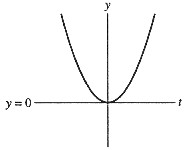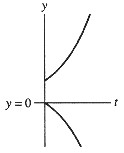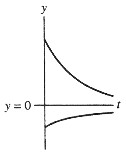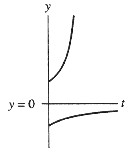Solve the problem.Suppose that an epidemic is spreading at a rate proportional to the square of the infected population. Let f(t) be the number of infected people at time t, and suppose y = f(t) satisfies a differential equation  . Which of the following sets of curves could represent solutions of
. Which of the following sets of curves could represent solutions of  [Hint: First determine the differential equation y' = g(y) .]
[Hint: First determine the differential equation y' = g(y) .]
A. 
B. 
C. 
D. 
Answer: D
You might also like to view...
Find all the roots of the function. Use preliminary analysis and graphing to determine good initial approximations. Round to six decimal places.f(x) = ln(4x) - 4x2 + 2x + 1
A. x ? 0.080253, 1.072435 B. x ? 1.580364, 2.572546 C. x ? 0.302364, 1.294546 D. x ? 0.080364, 1.072546
Change the Cartesian integral to an equivalent polar integral, and then evaluate.
A. ?(10 ln 10 + 9) B. ?(9 ln 10 + 9) C. ?(9 ln 10 - 9) D. ?(10 ln 10 - 9)
Find the length of the unknown side of a right triangle with legs a and b and hypotenuse c. Round to the nearest thousandth, if necessary.a = 6, c = 10
A. b = 9 B. b = 8 C. b = 10 D. b = 7
Solve the compound inequality. Express the solution using interval notation. Graph the solution set.x ? 5 and x ? -3![]()
A. (-3, 5)![]()
B. [-3, 5]![]()
C. (-?, -3] ? [5, ?)![]()
D. ?![]()